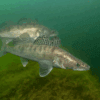Data Management Best Practices for Fisheries Biologists
Introduction
Effective data management is crucial in the field of fisheries biology, where research often generates vast amounts of complex data. Proper handling, storage, and analysis of this data are essential for drawing accurate conclusions and making informed decisions. This blog post will outline best practices for data management that fisheries biologists can implement to ensure their data is both reliable and useful.
Understanding the Importance of Data Management
Data in fisheries biology can include everything from population statistics and habitat conditions to genetic information and migration patterns. Managing this data efficiently allows researchers to:
- Track Changes Over Time: Monitor ecosystems and species changes, assessing the impact of environmental or human factors.
- Enhance Research Accuracy and Reproducibility: Ensure that data can be accurately replicated and verified by other researchers.
- Facilitate Decision Making: Provide stakeholders with clear, actionable insights based on solid evidence.
Best Practices in Data Management:
Data Collection Standards:
- Implement consistent methodologies for data collection to ensure accuracy and comparability.
- Use standardized forms and protocols that all team members can follow.
Quality Control:
- Regularly check data for errors or inconsistencies.
- Utilize software tools that can automate the detection of common data entry errors.
Data Storage and Backup:
- Store data on secure, reliable platforms. Consider cloud storage solutions for enhanced security and accessibility.
- Regularly back up data to prevent loss due to hardware failure, physical damage, or cyber threats.
Data Organization:
- Organize data in a logical, hierarchical structure that makes it easy to locate and access specific datasets.
- Use clear, consistent naming conventions for files and folders.
Access Controls:
- Restrict data access to authorized personnel only to protect sensitive information.
- Maintain logs of data access and edits to track changes and ensure accountability.
Data Sharing and Collaboration:
- Facilitate data sharing with other researchers and stakeholders in a manner that respects privacy and intellectual property rights.
- Use platforms that support collaboration and seamless integration of data from multiple sources.
Data Analysis:
- Employ robust statistical software and techniques tailored to the specific needs of fisheries research.
- Continuously update analytical methods to incorporate the latest advancements in data science.
Documentation and Reporting:
- Maintain thorough documentation of data management procedures, data collection methods, and analysis techniques.
- Ensure that reports are clear and include all necessary information to allow others to understand and replicate the research.
Explore Voda IQ’s Solutions
Contact Voda IQ today to learn more about our advanced data collection software and comprehensive database options designed specifically for fisheries research. Our tools are crafted to streamline data management, enhance research productivity, and provide actionable insights that help conserve aquatic ecosystems. Visit our website or reach out directly to discuss how our solutions can be tailored to meet your specific research needs.
Conclusion
Effective data management is a cornerstone of successful fisheries research. By adopting these best practices, fisheries biologists can maximize the value of their data, ensuring it contributes to the sustainability and health of aquatic ecosystems.







Add comment